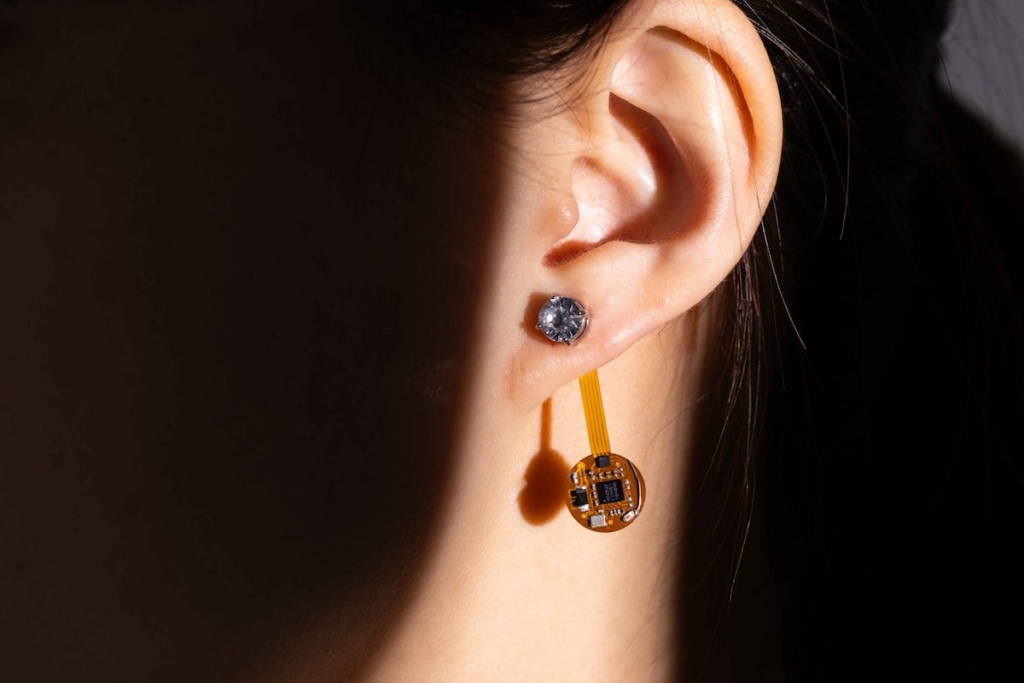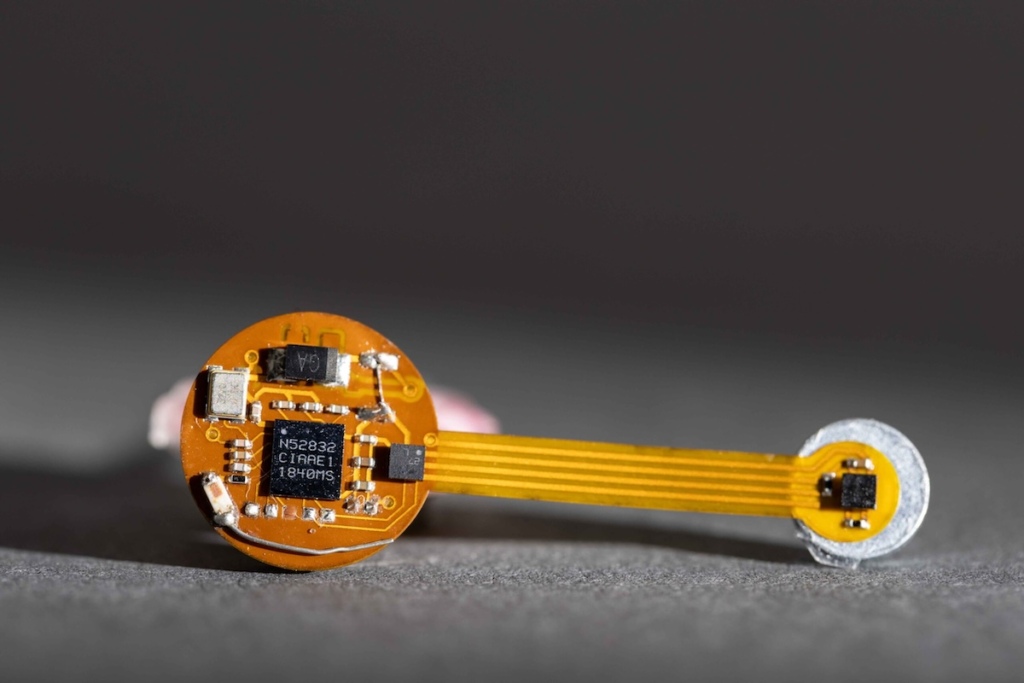
Researchers at the University of Washington have created a novel wearable technology, the Thermal Earring, which can continuously monitor a user’s earlobe temperature. This smart earring, designed to be both a fashionable accessory and a health monitoring device, has shown promising results in a study involving six users, particularly in the field of reproductive health monitoring.
The Thermal Earring is a wireless wearable that not only tracks skin temperature during rest more accurately than a smartwatch but also has potential applications in monitoring stress, eating, exercise, and notably, ovulation. The device, about the size and weight of a small paperclip, features a 28-day battery life and attaches to the earlobe using a magnetic clip. It includes one temperature sensor on the earlobe and another sensor to estimate room temperature, ensuring accurate readings by distinguishing between body and ambient temperatures.
This technology, detailed in the Proceedings of the ACM on Interactive, Mobile, Wearable and Ubiquitous Technologies, is not yet commercially available but represents a significant step forward in personal health monitoring. “I wear a smartwatch to track my personal health, but I’ve found that a lot of people think smartwatches are unfashionable or bulky,” said Qiuyue (Shirley) Xue, a UW doctoral student and co-lead author of the study. The Thermal Earring offers an elegant solution, combining fashion with functionality.
Creating a wearable that was small enough to be unobtrusive yet capable of lasting several days on a single charge presented a challenge to the researchers. They achieved this by optimizing the earring’s power consumption and incorporating a Bluetooth chip, battery, two temperature sensors, and an antenna into its design. The device uses Bluetooth advertising mode for efficient power use, reading and sending temperature data before entering a deep sleep mode to conserve energy.

The team also explored the Thermal Earring’s potential in medical applications, including continuous fever monitoring. In a comparison of earlobe temperatures between patients with fevers and healthy individuals, the device detected significant temperature increases, suggesting its utility in long-term health monitoring.
Of particular interest is the earring’s ability to monitor ovulation. In tests, the Thermal Earring’s readings varied by an average of 0.58°F (0.32°C), within the range necessary for tracking ovulation and menstrual periods, showcasing its potential as a tool for reproductive health monitoring. “Current wearables provide only an average temperature for the day, and their readings are too noisy to track ovulation,” Xue noted, highlighting the need for more precise and targeted monitoring tools like the Thermal Earring.
While the initial findings are promising, further research and data are required to refine the device’s models for each potential use case. Future iterations of the Thermal Earring may include heart rate and activity monitoring, and there’s interest in exploring alternative power sources, such as solar or kinetic energy.



